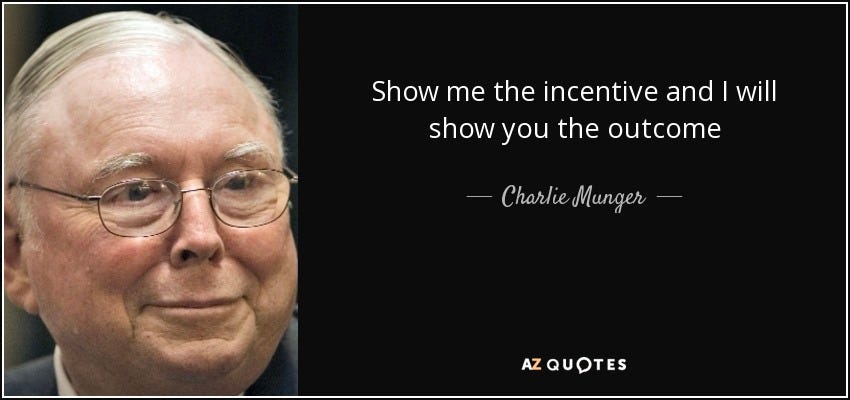The Economics of Cold Calling - What Gets Measured, Gets Managed (Part 2)
What We Can Learn From Our Brothers (And Sisters) In Marketing
In Part 1 of “The Economics of Cold Calling”, we discussed the importance of having a pre-channel validated list and waterfalling through a variety of data sources to minimize the amount of bad data in your system (as well as the ruinous economic consequences therein for NOT completing this exercise)
Next, we will turn our attention to the importance of measurement, and on how you get exactly what you ask for.
When You Measure The Wrong Thing (Or Nothing), You Get The Wrong Thing (Or Nothing):
Today, I’m going to lay the groundwork for a first principles framework that breaks successful cold calling down into it’s constituent components
As much as sales people like to give marketers a hard time, our reluctant partners in demand generation are phenomenal at keeping an eye on channel ROI. Ask a marketing guy how an ad is performing, and he’ll pull up a dashboard a mile long quantifying every single possible metric - CTR, CPC, ROAS, CTOR, you name it - with visibility into every stage of conversion, and 4 or 5 variations to A/B test to boot.
When it comes to cold calling, most organizations fall well shortly of this benchmark.
Ask your average VP of Sale about his outbound calling machine, and you’re more likely to get a smattering of cliches than any first principles thinking.
Here’s some of the more colorful commentary I’ve heard over the years:
“We don’t make cold calls, we make WARM, researched calls”
“We’re strategic callers - my reps don’t just call to call!”
“if my reps aren’t making X number of dials per day or booking Y meetings per month I’ll just go and find somebody who will!”
While a marketer may have A/B tested the hook on their ad across hundreds of thousands of impressions, if you ask the average sales leader about call scripts they’ll go on an asinine diatribe about how “scripts make you sound impersonal” or non-sequiturs like “I want my people to connect on a human to human level without scripts getting in the way”
Nature abhors a vacuum, and in the absence of a clearly defined frameworks to measure the efficacy of cold calling, leaders fall into nonsense, including but not limited to:
Micromanaging numbers of dials made
Over-indexing on immediate meetings scheduled
Over-investing in tools to drive activity for its own sake
And is it really any surprise?
To most execs, cold calling is rough, dirty, unpleasant work delegated to juniors. In the same way that one hires a professional when their pipes burst (see what I did there? ;)) , most execs would rather throw money at a problem and then just walk away, expecting the house to smell like daisies when they get back. Cold calling is the wet work inside any GTM organization, and this divorce from the frontlines turns an otherwise easily-engineered process into an inscrutable black box. Armed with the vague knowledge that reps have to hit the “dial” button to speak to anybody, execs jog back around to the other side of the tunnel, and in the same way that one stands at the airport waiting to pick up a loved one, they await impatiently with crossed arms and tapping Oxfords, waiting for meetings to magically appear out the other side.
Ignorant to what happens in the middle, these otherwise intelligent, handsomely paid and assuredly very serious sales leaders turn into tribal village elders residing deep in the Amazon, ascribing elaborate rituals and Acts of God to the mystical machinations that turn dials into the fabled “Meeting Scheduled”
It is from this world that we see birthed the litany of “Tales of Horror From Sales” stories that disgrace the profession:
Double/triple dialing
Reps intentionally calling out of service numbers to pad dial counts
Brand-damaging “objection overcomes” that turn prospects from “Not Now” into “Not Ever Because You’re Gross”
Bribing prospects to attend meetings with gift cards (as opposed to, you know, them wanting to be there to solve a problem they, you know, actually have)
In Part 3, we will talk about what to measure instead, why it matters and how to build a system that, like a well-balanced asset portfolio, leverages positively compounding returns to only get bigger and better.





